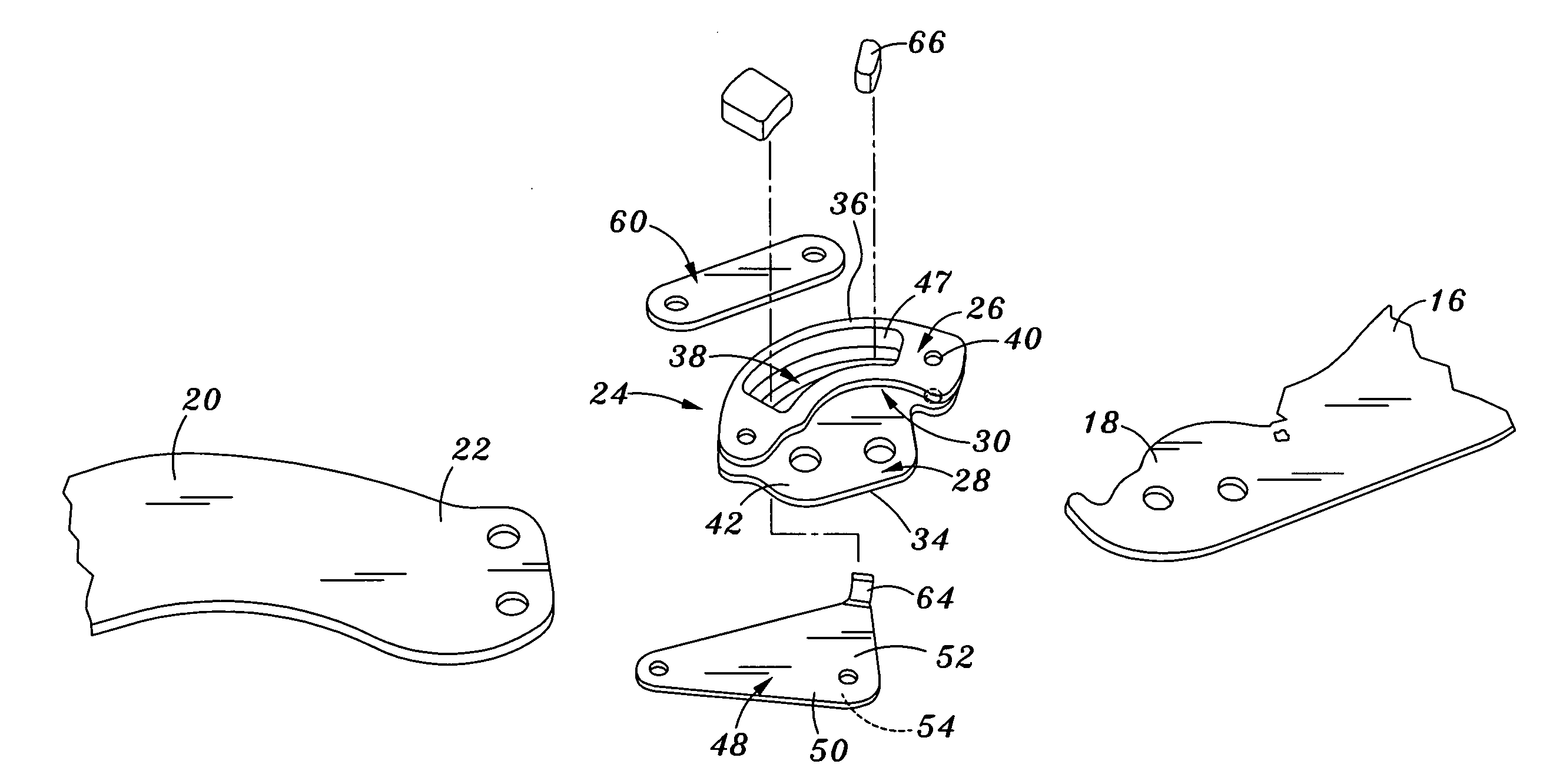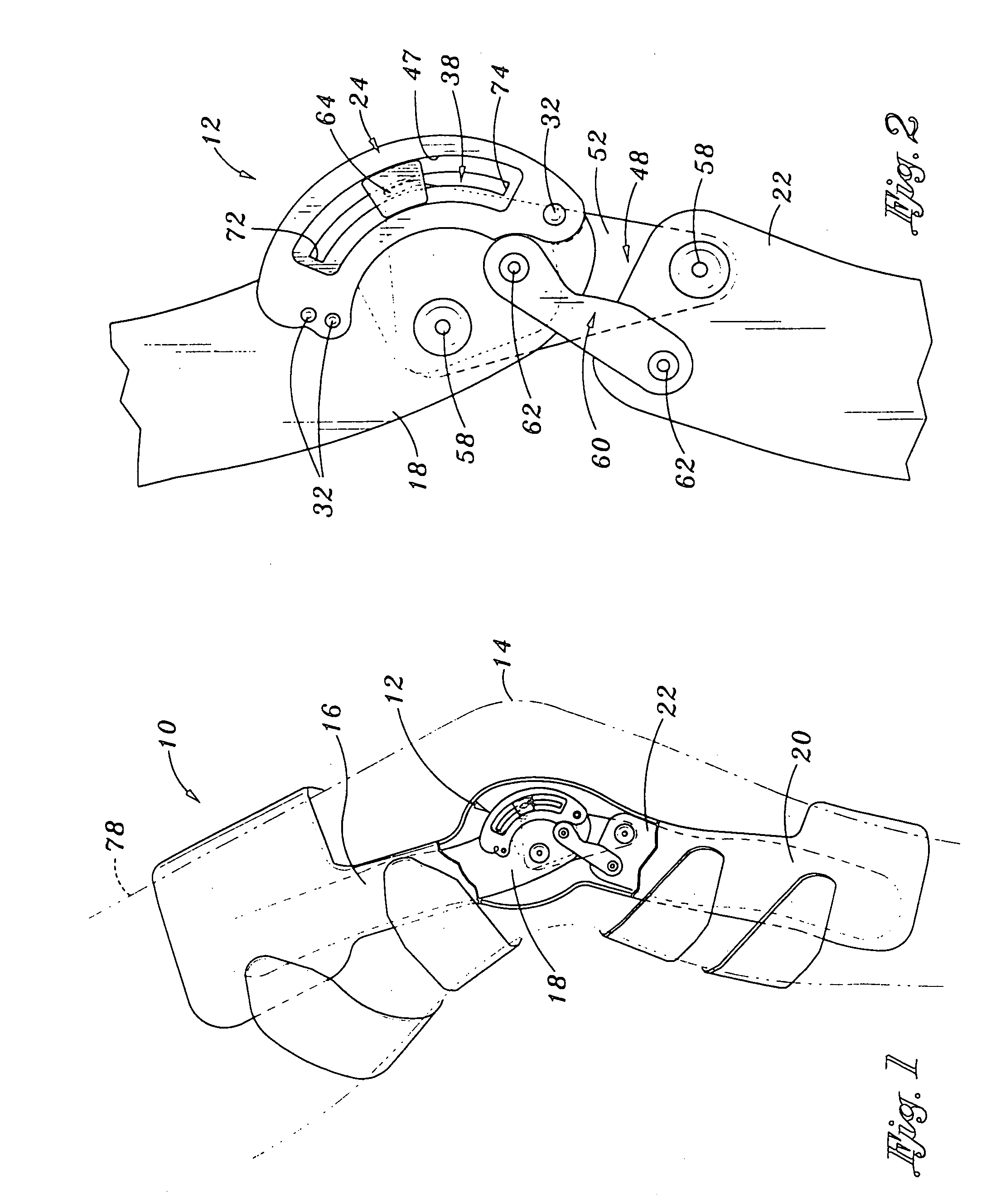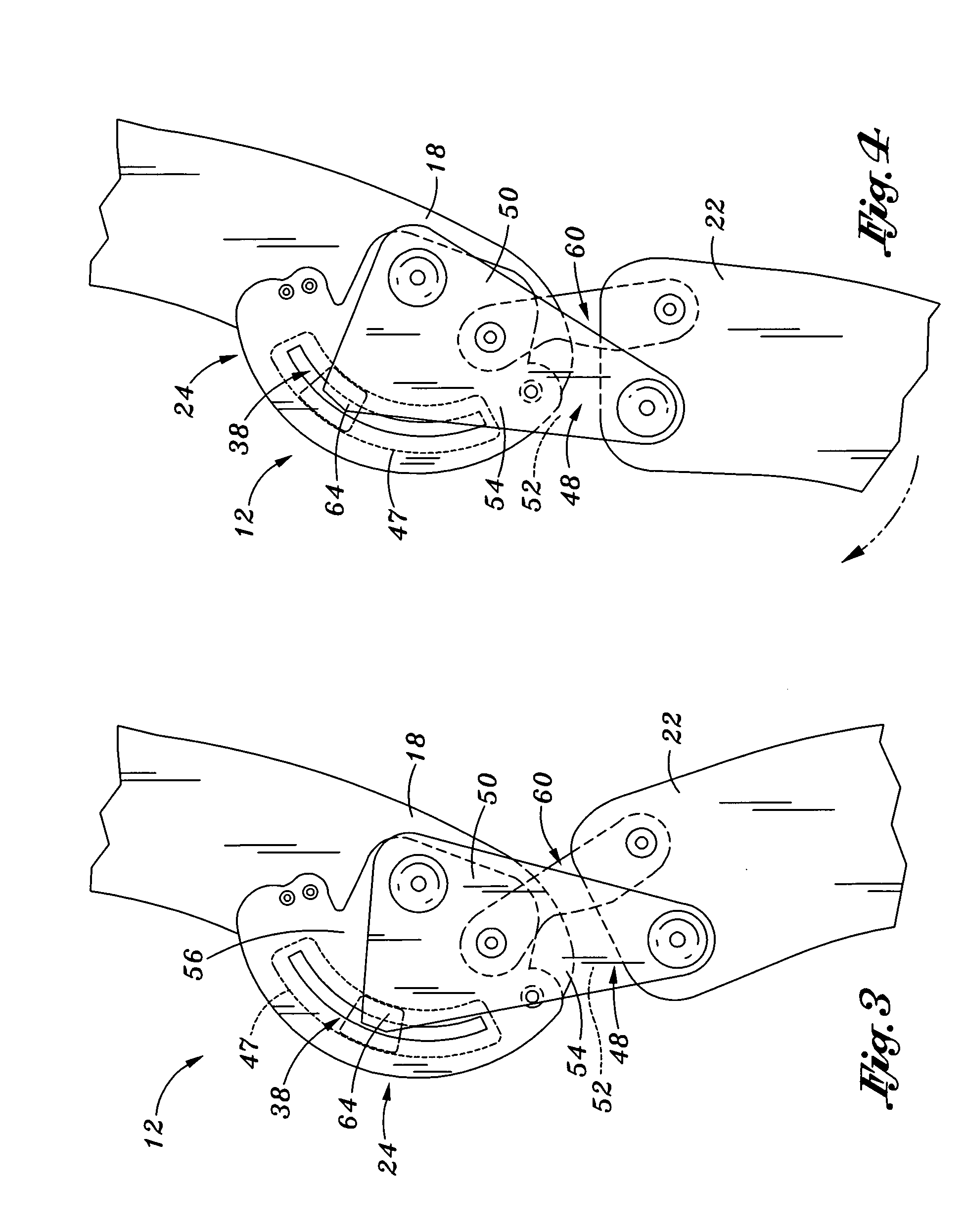Hinge system for regulating knee joint flexion and extension
a technology of knee joint flexion and extension, which is applied in the field of hinge mechanisms for knee braces, can solve the problems of reducing the likelihood of the user's knee joint being properly rehabilitated, most contemporary knee brace hinge mechanisms fail to possess sufficient adjustability, and most conventional hinge mechanisms are not able to provide the precise simulation of knee joint movement as described above or control the range of knee joint motion. to achieve the effect of preventing re-injury
- Summary
- Abstract
- Description
- Claims
- Application Information
AI Technical Summary
Benefits of technology
Problems solved by technology
Method used
Image
Examples
Embodiment Construction
[0031]Referring now to the drawings wherein the showings are for purposes of illustrating preferred embodiments of the present invention only, and not for purposes of limiting the same, FIG. 1 illustrates a knee brace 10 constructed in accordance with a preferred embodiment of the present invention. As indicated above, the present knee brace 10 includes a unique hinge system 12 which simulates the movement of a user's knee joint 14, while being capable of regulating its flexion and extension within a number of prescribed ranges of motion. This ability to simulate and regulate the knee joint movements within a selected optimal range of motion helps to rehabilitate an injured knee joint 14 and may further prevent re-injury of the same due to hyper-extension and / or flexion.
[0032]Referring more particularly to FIGS. 2 and 5, the knee brace hinge system 12 of the present invention may be utilized in conjunction with various knee braces. Types of knee braces that are compatible with the p...
PUM
 Login to View More
Login to View More Abstract
Description
Claims
Application Information
 Login to View More
Login to View More - R&D
- Intellectual Property
- Life Sciences
- Materials
- Tech Scout
- Unparalleled Data Quality
- Higher Quality Content
- 60% Fewer Hallucinations
Browse by: Latest US Patents, China's latest patents, Technical Efficacy Thesaurus, Application Domain, Technology Topic, Popular Technical Reports.
© 2025 PatSnap. All rights reserved.Legal|Privacy policy|Modern Slavery Act Transparency Statement|Sitemap|About US| Contact US: help@patsnap.com



